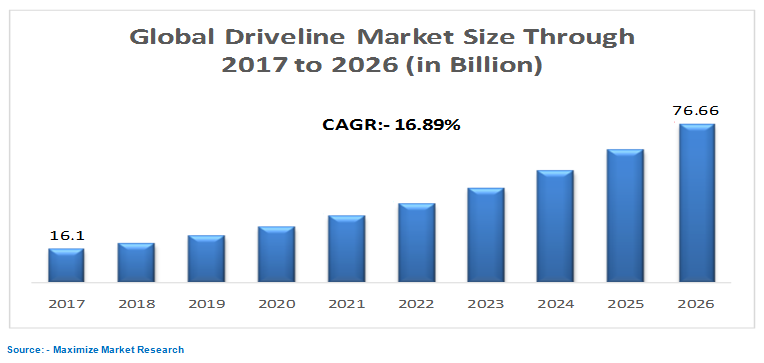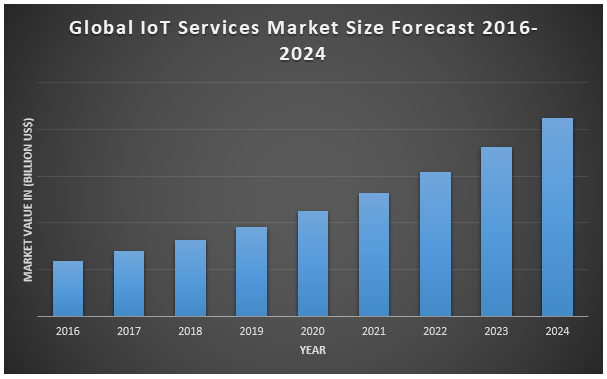Market Scenario
Electric, Hybrid or Alternative Fuel Vehicle Market is expected to reach XX Billion by 2026
from XX Billion in 2017 at CAGR of XX % (Detailed analysis of the market CAGR is provided in
the report).
In recent years use of conventional fuels has increased all over the globe. Conventional fuels are causing
more of environmental hazards. Countries all over the globe are now focusing on the other form of fuels.
With respect to that phenomenon, automotive industry is continuously working to reduce dependency on
fossil fuels. Industry experts are continually channeling more resources into developing the next
generation of low carbon vehicles, aimed at addressing the issues of CO2 emissions.
There are three main conclusive ideas that can lead the changing scenario
• Electric
• Alternative fuels
• Hybrid (Combination of these with fossil fuels)
Such vehicles produce very less carbon related compounds, such as oxides of carbon, nitrogen, and sulfur,
which make them an eco-friendly alternative in the automobile industry. Moreover, passengers can actually
switch between the three power trains while driving depending on the requirement are trending the overall
Electric, Hybrid or Alternative Fuel Vehicle market.
The highest revenue generating region is APAC in 2017; followed by North America. APAC is estimated
to grow at one of the highest rate during 2017–2026. In Asia-Pacific region China is expected to register the
highest growth. Asian manufacturers such as Toyota and Hyundai are among the pioneer companies in this market and leading market players from all over the globe have focused on expanding their business operations in the fast-growing emerging countries like India and China are the reasons behind this increased growth in APAC region.
Key Highlights:
• Assessment of market definition along with the identification of key players and analysis of their strategies to determine the competitive outlook of the market, opportunities, drivers, restraints and challenges for this market during the forecast period
• Complete quantitative analysis of the industry from 2017 to 2026 to enable the stakeholders to capitalize on the prevailing market opportunities
• In-depth analysis of the industry on the basis of market segments, market dynamics, market size, competition & companies involved value chain
• Electric, Hybrid or Alternative Fuel Vehicle market analysis and comprehensive segmentation with respect to the fuel type, engine type, vehicle type, power train and geography to assist in strategic business planning
• Electric, Hybrid or Alternative Fuel Vehicle market analysis and forecast for five major geographies North America, Europe, Asia pacific, Middle East & Africa, Latin America and their key regions
Research Methodology
Research methodology used in this report contains various secondary sources including directories such as International Organization of Motor Vehicle Manufacturers (OICA), Emission Controls Manufacturers Association (ECMA), European Automobile Manufacturers Association (EAMA), Environmental Protection Agency (EPA), and International Council on Clean Transportation (ICCT). Bloomberg, Hoovers, Factiva are some of the sites that are being referred to gain insights about Electric, Hybrid or Alternative Fuel Vehicle market. Experts from top manufacturing companies along with other stakeholders have been considered. This is done to validate and collect critical information for evaluating trends related to this market during the forecast period. Top-down and bottom-up approaches have been used to estimate the global and regional size of this market. Data triangulation techniques along with other comparative analysis are also used to calculate the exact size of the Electric, Hybrid or Alternative Fuel Vehicle market globally

Key Players in the Electric, Hybrid or Alternative Fuel Vehicle Market Are:
• BMW Group
• Telsa
• Toyota Motor Corporation
• Honda Motor
• Zero Motorcycles, Inc.
• General Motors
• Daimler AG
• Energica Motor Company S.P.A
• Ford Motor Company
• BYD Company Motors
Key Target Audience:
• Research and Consulting Firms as well as Venture capitalists and startup companies
• Electric, Hybrid or Alternative Fuel Vehicle Manufacturers
• Technology providers of Electric, Hybrid or Alternative Fuel Vehicle Market Investors
• Component and device suppliers and distributors of Electric, Hybrid or Alternative Fuel Vehicle Market
• Government , Legislative and Regulatory Bodies
• Associations, organizations, forums, and alliances related to transportation industries
• Independent and Authorized Dealers of Electric, Hybrid or Alternative Fuel Vehicle Market
• Traders and Stakeholders Operating In the Sector
• Service providers
Scope of the Report: Research report categorizes the Electric, Hybrid or Alternative Fuel Vehicle market based on fuel type, engine type, vehicle type, power train and geography (region wise). Market size by value is estimated and forecasted with the revenues of leading companies operating in the Electric, Hybrid or Alternative Fuel Vehicle market with key developments in companies and market trends
Electric, Hybrid or Alternative Fuel Vehicle Market, By Fuel Type
• Gaseous Fuel (LPG, CNG, and LNG)
• Petrol & Diesel
• Pure Electric
• Alternative Fuel (Biofuel, Bio-diesel, Fuel Cell, Liquid Nitrogen and Dimethyl Ether)
Electric, Hybrid or Alternative Fuel Vehicle Market, By Engine Type
• Gaseous Engine
• Petrol & Diesel Engine
• Pure Electric Engine
• Alternative Fuel Engine(Biofuel, Bio-diesel, Fuel Cell, Liquid Nitrogen and Dimethyl Ether)
Electric, Hybrid or Alternative Fuel Vehicle Market, By Vehicle Type
• Two Wheeler
• Passenger Car
• Commercial Vehicle
o Light Commercial Vehicle
o Heavy Commercial Vehicle
Electric, Hybrid or Alternative Fuel Vehicle Market, By Power Train
• Series Power Train
• Combined Power Train
• Parallel Power Train
Electric, Hybrid or Alternative Fuel Vehicle Market, By Geography:
• North America
• Europe
• Asia Pacific
• Middle East & Africa
• Latin America
Electric Power Steering market is segmented by component, electric motor type, application, electric vehicle, type, mechanism, off-highway vehicles and geography. The market by component is segmented by steering wheel, steering column, sensors, steering gear, mechanical rack and pinion, electronic control unit (ECU), electric motor and bearings. The market on the basis of electric motor type includes brushed dc motors and brushless dc motors. Electric vehicle segment is classified as HEV, BEV and PHEV. Type market is segmented as C-EPS, P-EPS and R-EPS. The mechanisms covered in this report are collapsible EPS and rigid EPS. Off-highway vehicles segment bifurcated as agricultural equipment and construction equipment. Applications covered in this report passenger cars and commercial vehicles. The market on the basis of geography is segmented by North America, Europe, Asia-Pacific, Middle East & Africa and Latin America. Global measures by OEMS to reduce complexity and weight of vehicles and increasing vehicle production are trending the overall Electric Power Steering market. However, higher cost of EPS as compared to traditional steering systems will restrain the market growth. APAC is going to emerge as one of the higher growth region in forecast period followed by North America and Europe. Rising per capita income of the region’s widespread consumer base has created a favorable environment for the growth will drive the market in APAC region. The North American and European markets are set to have steady pace during the forecast period because majority of the vehicles in these regions are equipped with electric power steering system.

 Driveline market is segmented by power electronics, transmission type, final drive, motor output, drive type, architecture, vehicle type and geography. The market by power electronics is segmented by inverter, converter and power control unit. The market on the basis of transmission type includes AT, E-CVT and DCT. Final drive market segment is classified as differential and E-Axle. Motor output market is segmented as 45–100 kW, 101–250 kW and >250 kW .The drive types covered in this report are FWD, RWD and AWD. Architecture segment bifurcated as series, parallel, power split and EV driveline. Vehicle type market is segmented as HEV, PHEV and BEV. The market on the basis of geography is segmented by North America, Europe, Asia-Pacific, Middle East & Africa and Latin America.
Increasing trend of parallel hybrid architecture over other driveline architectures is trending the overall Driveline market. However, difficulty in achieving and maintaining optimum power-to-weight ratio is hindering the growth of electric vehicles will restrain the market growth. APAC is going to emerge as one of the higher growth region in forecast period. Rising per capita income of the region’s widespread consumer base has created a favorable environment for the growth will drive the market in APAC region
Driveline market is segmented by power electronics, transmission type, final drive, motor output, drive type, architecture, vehicle type and geography. The market by power electronics is segmented by inverter, converter and power control unit. The market on the basis of transmission type includes AT, E-CVT and DCT. Final drive market segment is classified as differential and E-Axle. Motor output market is segmented as 45–100 kW, 101–250 kW and >250 kW .The drive types covered in this report are FWD, RWD and AWD. Architecture segment bifurcated as series, parallel, power split and EV driveline. Vehicle type market is segmented as HEV, PHEV and BEV. The market on the basis of geography is segmented by North America, Europe, Asia-Pacific, Middle East & Africa and Latin America.
Increasing trend of parallel hybrid architecture over other driveline architectures is trending the overall Driveline market. However, difficulty in achieving and maintaining optimum power-to-weight ratio is hindering the growth of electric vehicles will restrain the market growth. APAC is going to emerge as one of the higher growth region in forecast period. Rising per capita income of the region’s widespread consumer base has created a favorable environment for the growth will drive the market in APAC region


 Key Players in the Digital Instrument Cluster Market Are:
• Bosch
• Panasonic
• Denso
• Toshiba
• Delphi
• Magneti Marelli
• Yazak
• Nvidia
• IAC Group
• Visteon
• Nippon Seiki
Key Players in the Digital Instrument Cluster Market Are:
• Bosch
• Panasonic
• Denso
• Toshiba
• Delphi
• Magneti Marelli
• Yazak
• Nvidia
• IAC Group
• Visteon
• Nippon Seiki




